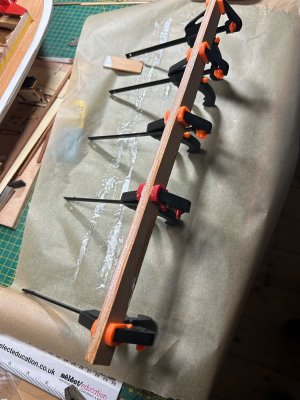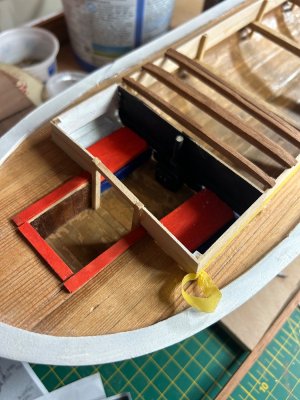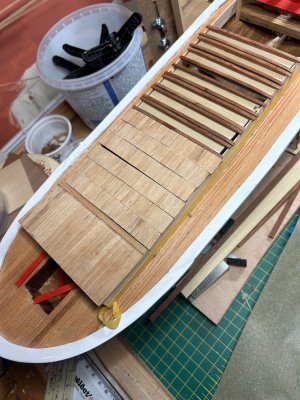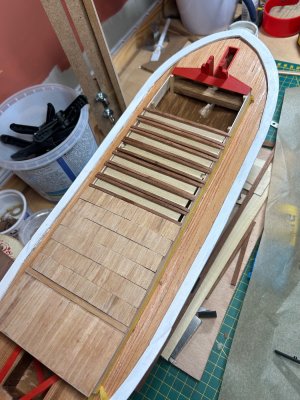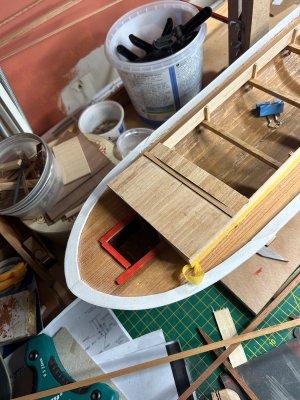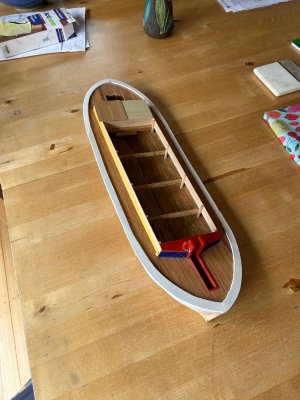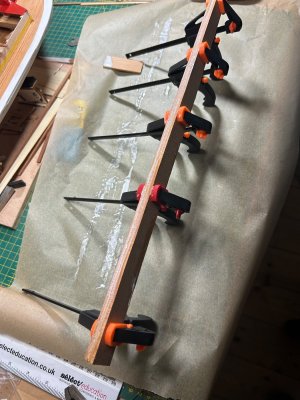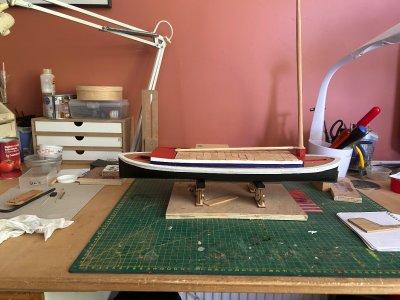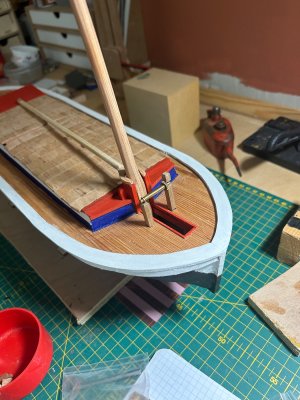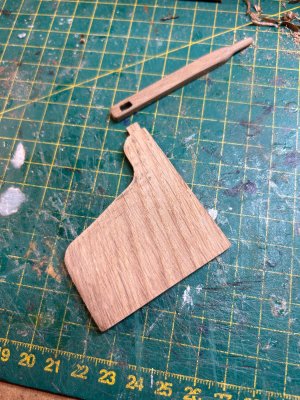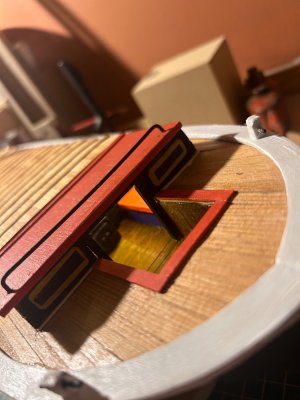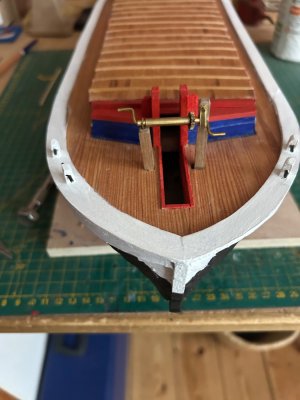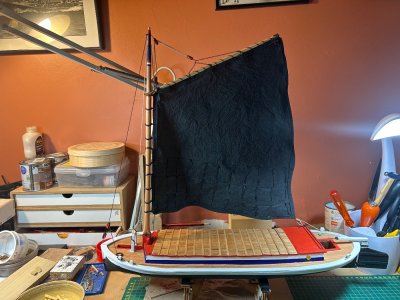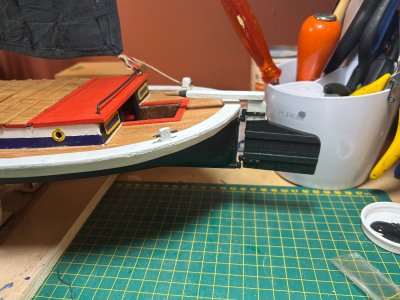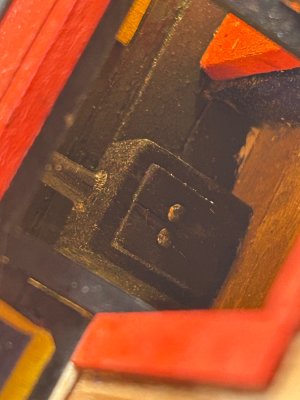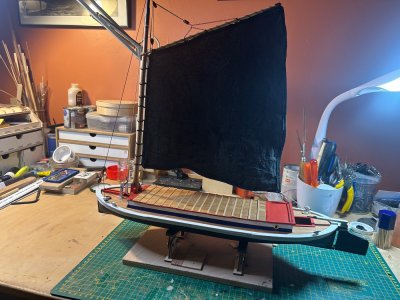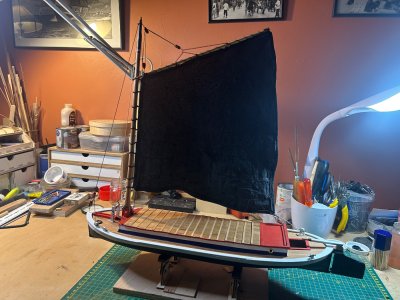- Joined
- Apr 26, 2021
- Messages
- 38
- Points
- 58

Hi all,
I've followed this site for a bit and other than a few comments not put up any of my own work. Having purchased one of the recent Occre HMS Victory "specials" no. 79 - I got waylaid in the pub and asked to build a model of a Norfolk Wherry. The Wherry is a very traditional working craft on the Norfolk Broads (UK) dating back to the early 1800's. Research was from "A Norfolk Wherry - How it was built circa 1825" by Michael Fuller and "Black sailed traders" by Roy Clark. Plans of a sort came from Cornwall Model Boats. first step was to make a jig to build the hull round. I use 6mm ply for this transcribing the frames from the plans to cut out the bulkheads. The Keel,stem and stern post was made from oak, rescued from a church signboard dated 1620!!
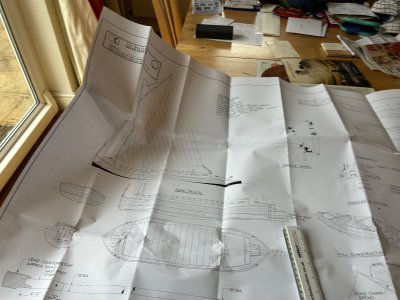
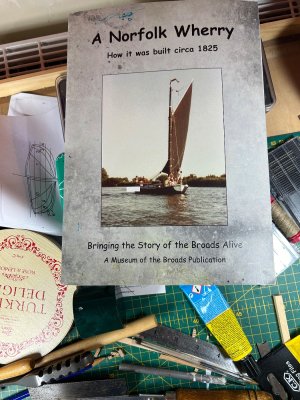
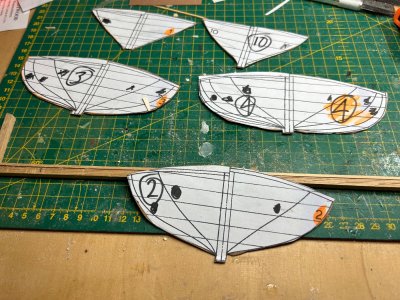
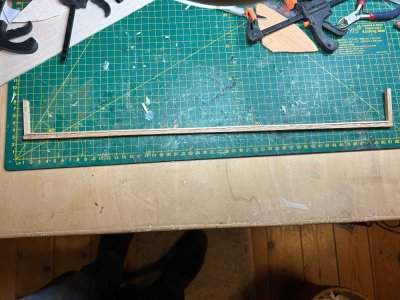
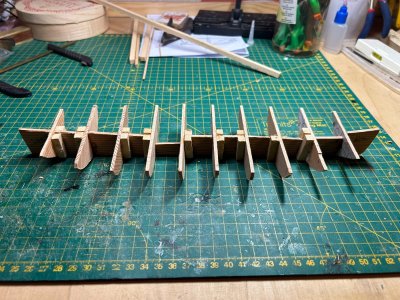
Next up was adding the planking in a clinker pattern. Majority of Wherrys were clinker built but there is at least one example (The Albion which is still inactive vessel run by the Norfolk Wherry trust) was carvel built.
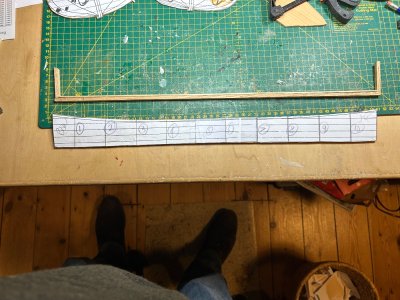
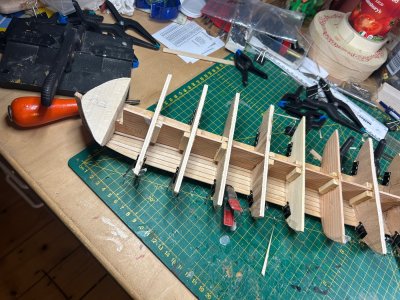
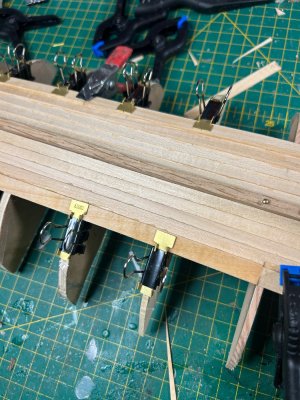
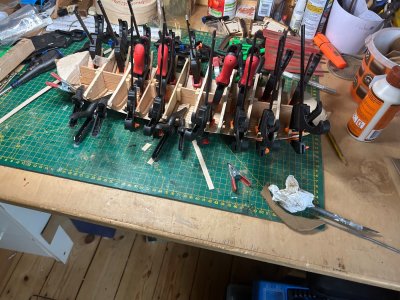
One the first few planks were fixed frames were added (again from the old oak, and the jig could be removed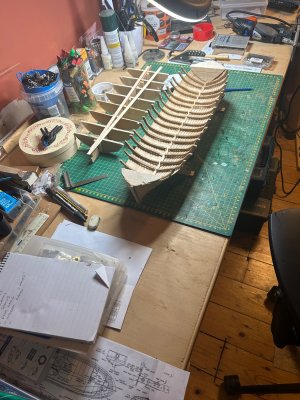
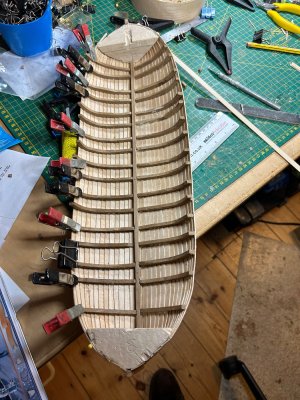
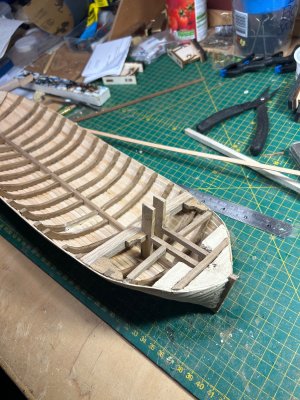
The internal structure around the bow and stern beams, knees etc. were added. Then the internal planking was built in.
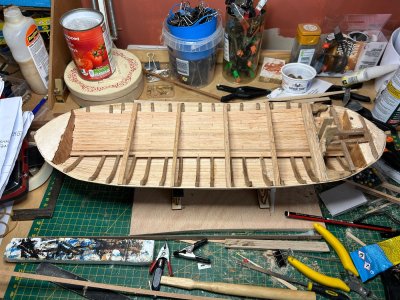
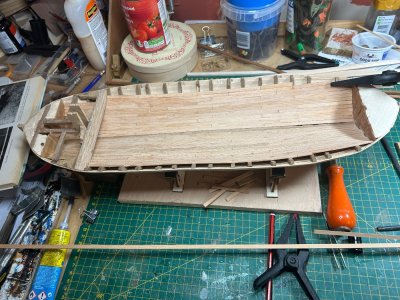
And then neck planking - in spruce was laid, followed by the hold sides and internal beams. See the Next post
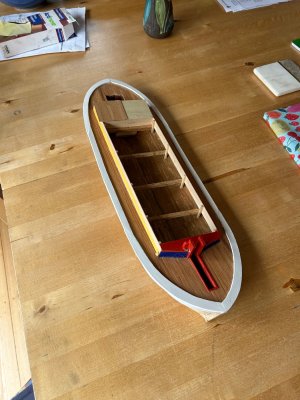
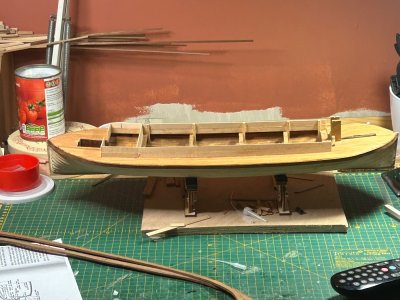
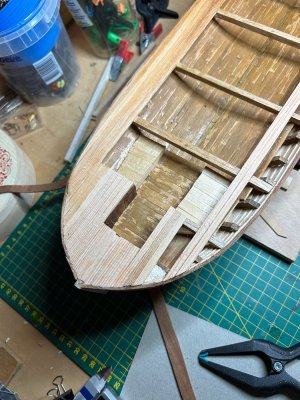
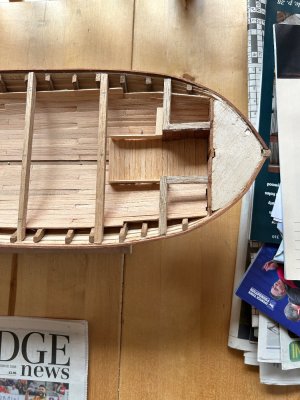
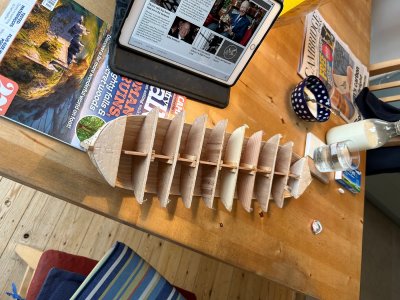
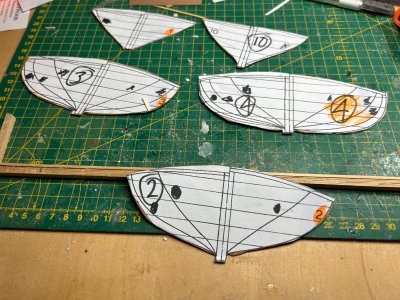
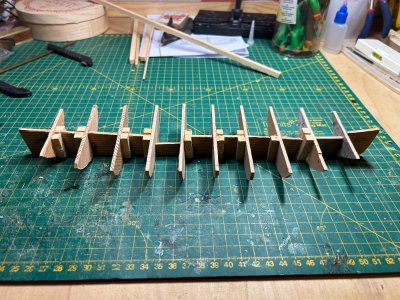
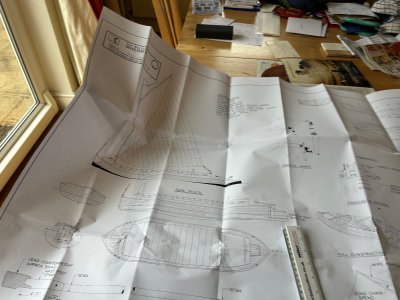
I've followed this site for a bit and other than a few comments not put up any of my own work. Having purchased one of the recent Occre HMS Victory "specials" no. 79 - I got waylaid in the pub and asked to build a model of a Norfolk Wherry. The Wherry is a very traditional working craft on the Norfolk Broads (UK) dating back to the early 1800's. Research was from "A Norfolk Wherry - How it was built circa 1825" by Michael Fuller and "Black sailed traders" by Roy Clark. Plans of a sort came from Cornwall Model Boats. first step was to make a jig to build the hull round. I use 6mm ply for this transcribing the frames from the plans to cut out the bulkheads. The Keel,stem and stern post was made from oak, rescued from a church signboard dated 1620!!





Next up was adding the planking in a clinker pattern. Majority of Wherrys were clinker built but there is at least one example (The Albion which is still inactive vessel run by the Norfolk Wherry trust) was carvel built.




One the first few planks were fixed frames were added (again from the old oak, and the jig could be removed



The internal structure around the bow and stern beams, knees etc. were added. Then the internal planking was built in.


And then neck planking - in spruce was laid, followed by the hold sides and internal beams. See the Next post










